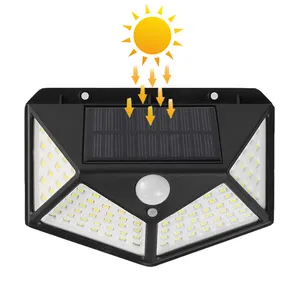
Light Fancy Nordic Modern Led Wall Lamp Led Motion Sensor Stairs Lights For Home Decoration Wardrobe


solar powered sensor lamp waterproof outdoor solar led gate pillar light for garden yard fence patio deck porch

















Sensor lights, a versatile category of lighting solutions, have become integral to modern living and design. These lights are equipped with sensors that can detect various forms of input such as motion, light levels, and even sound, triggering a response in the form of illumination. This technology spans across various applications, from enhancing home security to improving energy efficiency and convenience in residential and commercial spaces.
The range of sensor light options includes solar garden lights, smart home lights, and cabinet lights, each serving distinct purposes. Solar garden lights harness solar energy, providing eco-friendly lighting for outdoor spaces. Smart home lights integrate with home automation systems for a seamless user experience, while cabinet lights offer convenience and functionality in kitchen and storage areas. These sensor-based lights are not limited to specific areas and can be adapted for use in living rooms, under cabinets, and other spaces requiring automated lighting solutions.
Sensor lights come with various features such as adjustable settings, energy-saving modes, and different sensor types like PIR (passive infrared) or ultrasonic sensors. The materials used in these lights are diverse, including ABS, plastic, and aluminum alloy, each contributing to the durability and aesthetic of the light fixtures. The choice of material often depends on the intended use and location of the light, with outdoor lights requiring more robust materials to withstand the elements.
The advantages of incorporating sensor lighting into a space are manifold. They offer enhanced security by deterring intruders and providing visibility in dark areas. Energy efficiency is another significant benefit, as these lights only activate when needed, reducing unnecessary power consumption. Additionally, the convenience factor cannot be overstated; sensor lights provide hands-free operation, making them ideal for areas where manual light control is impractical.
When selecting a sensor light, it is important to consider the sensor range, the angle of detection, the type of sensor, and the environment in which it will be used. For instance, a motion sensor light for a garden would require a different sensitivity level and material than a light for indoor use. The design and layout capabilities, such as auto CAD layout and dialux evo layout, are also important for project planning and installation.
The impact of lighting on the environment is an important consideration. Sensor lights, especially those utilizing solar power, play a significant role in reducing carbon footprints. By optimizing light usage only when necessary and harnessing renewable energy sources, these lighting solutions support sustainability efforts and contribute to a greener future.